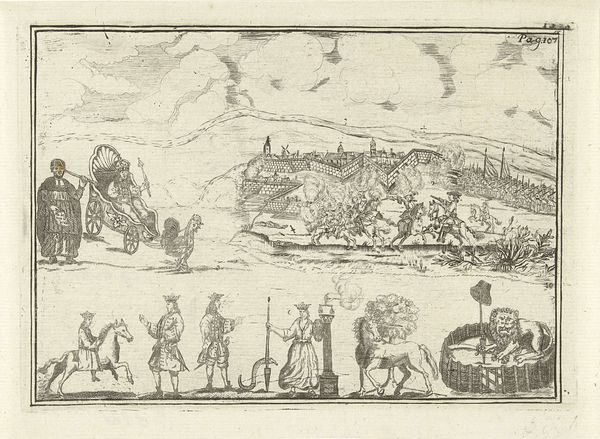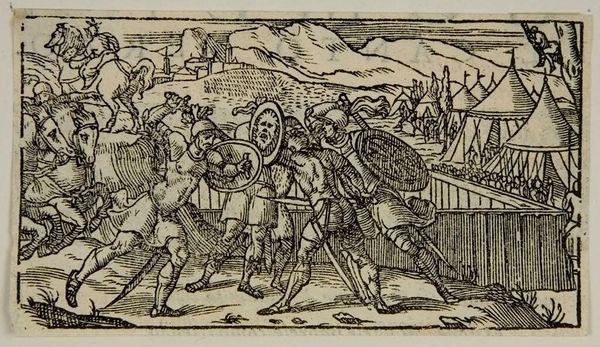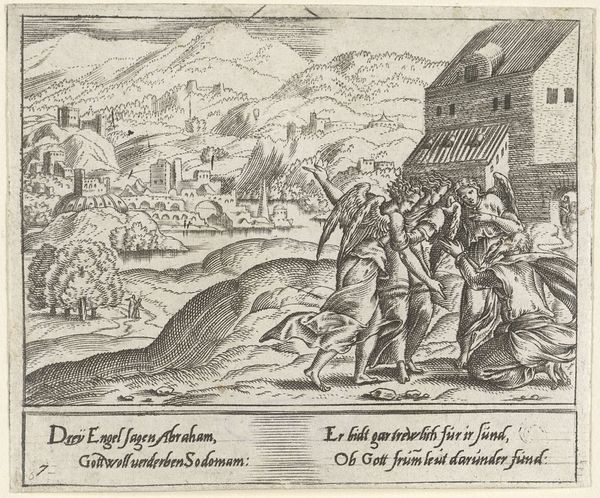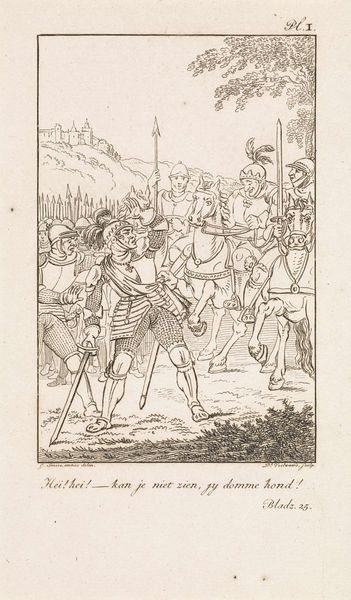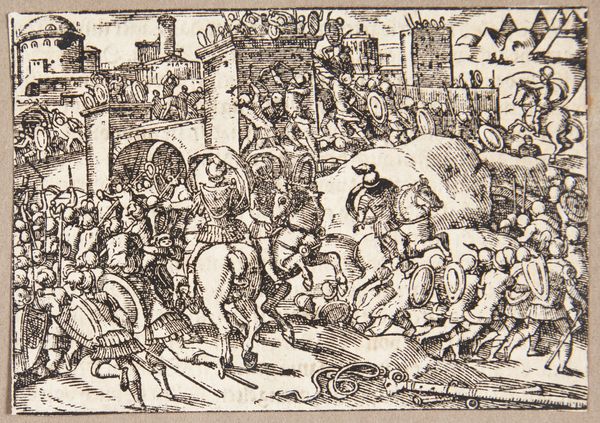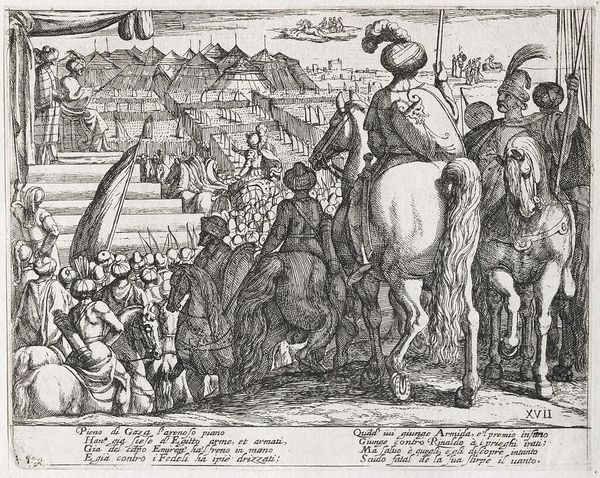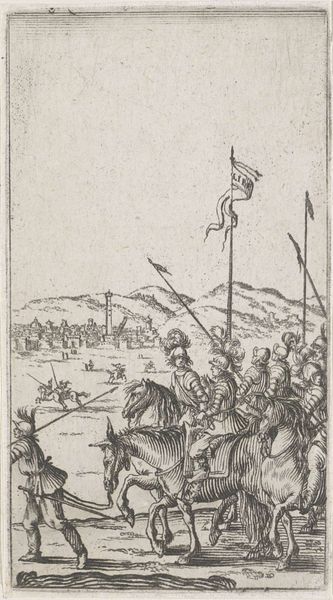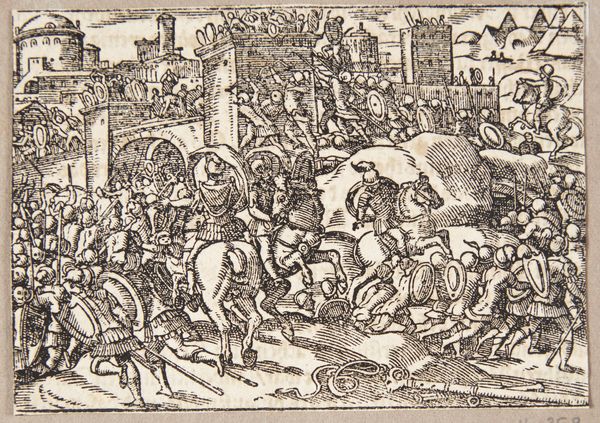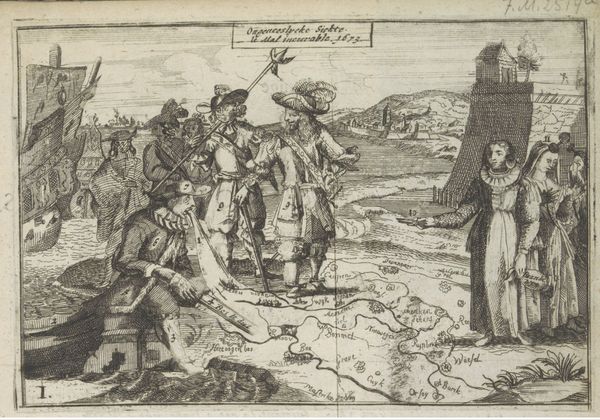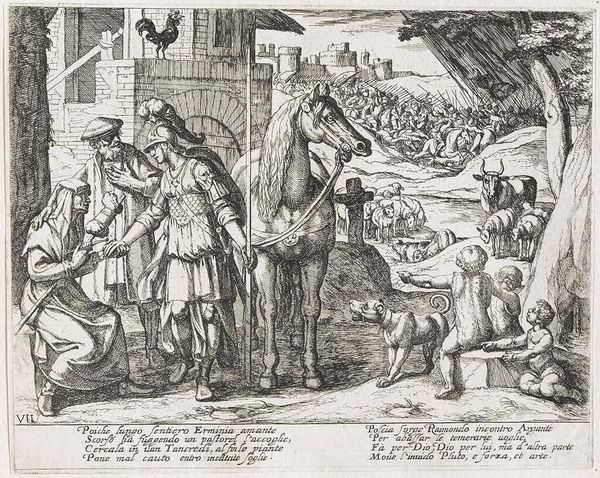
drawing, print, ink, engraving
drawing
narrative-art
pen illustration
landscape
figuration
ink line art
ink
cityscape
history-painting
northern-renaissance
engraving
Dimensions: height 60 mm, width 85 mm, height 84 mm, width 98 mm
Copyright: Rijks Museum: Open Domain
Editor: Here we have Hans Holbein the Younger's "Return of the Inhabitants of Jerusalem from Exile," an ink drawing printed in 1538. It’s rendered in a style that reminds me of historical tapestries; a black and white landscape populated by returning exiles. How do you interpret this work, seeing it here and now? Curator: Considering this image today, I think it prompts us to consider themes of displacement and return through a very specific historical lens. Holbein, working in a period of religious upheaval, invokes this Old Testament narrative of the return to Jerusalem. I’m immediately drawn to consider it alongside contemporary experiences of migration and diaspora. Can we see parallels in the hopes and hardships of these returning people and the experiences of refugees today? Editor: That's a great question. I hadn’t considered the contemporary resonance. Do you think Holbein intended to create a direct parallel to his contemporary world, or was he simply illustrating a biblical story? Curator: It's difficult to know Holbein's precise intentions, but the Reformation was reshaping Europe. Representations of biblical stories, even those seemingly straightforward, were often imbued with contemporary social and political meaning. His choice of subject matter and the empathy with which he depicts the returning exiles prompts the idea that Holbein may have sought to highlight shared experiences of dispossession and hope. How does that possibility shift your understanding of the work? Editor: It reframes everything! It is no longer just an historical image but speaks to enduring themes. I think it adds depth to its historical significance, layering it with social commentary, past and present. Curator: Exactly. By placing Holbein's work within this context, we recognize the role art can play in speaking across centuries. And it’s an invitation to consider our own positions and responsibilities within these ongoing historical narratives.
Comments
No comments
Be the first to comment and join the conversation on the ultimate creative platform.

